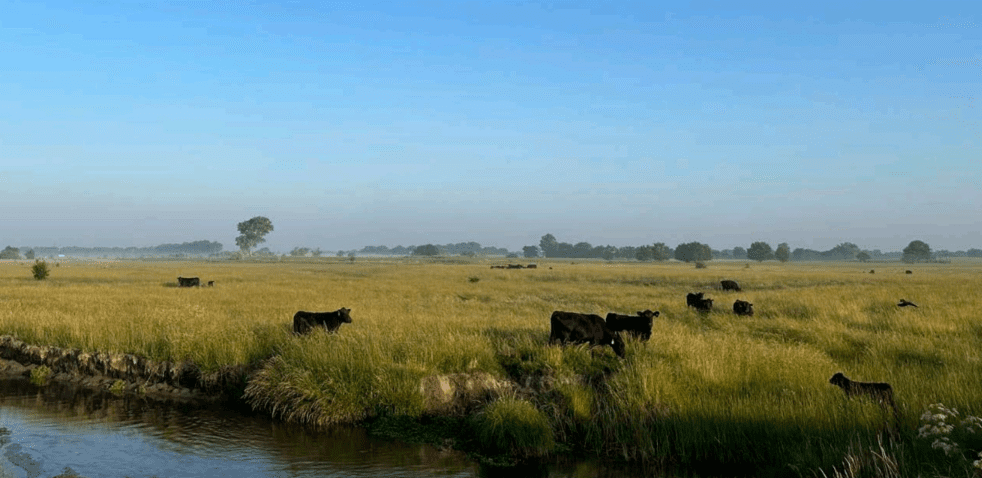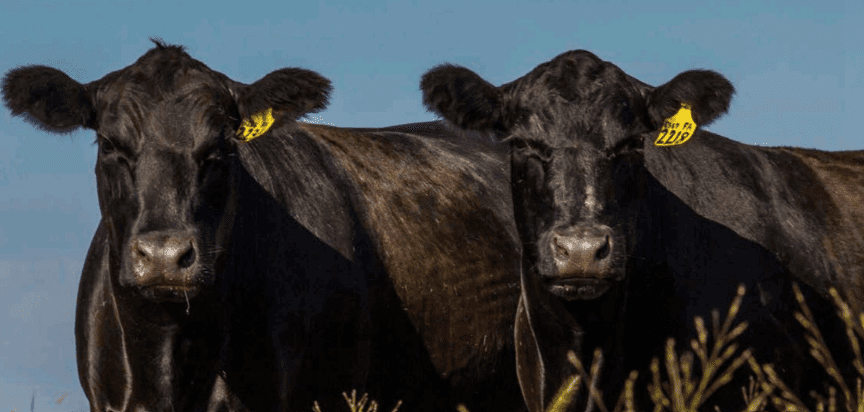

If the current number of cattle in your operation is at a low point due to drought, high input prices, high interest rates, loss of pasture, loss of labor, etc., you may be looking to rebuild in the coming years.
If that is the case, then this is a critical time to consider the best possible path forward for yourself and your operation.
It is worth the time to study, plan, and seek guidance on what strategy will best help you reach your goals. This article will highlight a few factors to ponder before expanding your herd.

There are three diseases that are not talked about very frequently but may be worth considering when the herd census is low. They may or may not be present in your herd, but if there, can cause ongoing headaches that worsen over time if left unattended. These three are: Bovine Viral Diarrhea Virus (BVDV), Bovine Leukosis Virus (BLV), and Johne’s disease.
Currenlty having low numbers of females in the herd provides an opportune time to address these disease issues because lab testing costs will be lower. Also, if you have culled heavily, you may have unknowingly gotten rid of most of the cows carrying these diseases already, and becoming disease-free may be easier.
Once you know the status of your core herd, you can re-stock with new females (raised or purchased) that are disease-free as well.
Bovine Viral Diarrhea Virus, even though “diarrhea” is in the name, typically causes pregnancy loss or immune system suppression leading to respiratory disease as the main clinical signs in beef cattle. If it is present, it can cause the “PI” condition you may have heard about.
This occurs when a cow pregnant between approximately one to four months of gestation gets infected. The developing calf’s immune system then develops without ever being able to fight or clear the infection. When the calf is born, it is termed “persistently infected” or a “PI calf”, and these calves will shed large quantities of the virus for life.
Many of these PI calves don’t reach adulthood, but some do and can affect numerous other animals by continuously shedding the virus into the environment. Making sure there are no PI animals in your current herd and then testing additions to the herd is a good foundation.
Also, maintaining immunity through vaccination will significantly reduce the risk if a PI animal exposes your cattle (such as a neighboring bull jumping into your pasture), that PI calves will be generated. The typical samples for testing are ear notches, and they are often tested in batches (pooled) to save on laboratory costs.
Side note – raising bucket calves born at feedlots is a significant risk of BVD introduction to a cowherd. There is a high risk that these calves are persistently infected. If you raise these types of calves, get them tested, and keep the main cowherd separate from them. Also, observe the biosecurity precautions that your veterinarian recommends.

Bovine Leukosis Virus (BLV) is a virus that causes lymphoma (a type of cancer that usually shows up first in lymph nodes) in about 5% of infected individuals. It also causes measurable unwanted changes in the immune system in numerous infected individuals (called lymphocytosis).
Around two-thirds of infected cattle appear to live normal lives, but around one-third are high shedders of the virus (have a high proviral load). These high-shedding cattle spread the virus to others more easily.
Also, there is evidence that they are culled from the herd at a higher rate. In other words, they just don’t last as long due to immune system dysfunction.
Additionally, of beef cull cow and bull carcasses condemned at slaughter, about 13% are condemned for lymphoma. This is a steady trickle of financial loss to beef operations that can be stopped with some careful, steady effort over time.
Johne’s disease is another incurable lifelong infection that causes gradually worsening diarrhea and weight loss in older cattle. It is caused by the bacteria Mycobacterium avium subspecies paratuberculosis.
It is typically thought of as a dairy cattle disease but has been found more frequently in beef cattle in recent years.
Bovine Leukosis Virus and Johne’s disease are both diseases that typically spread relatively slowly from animal to animal. Positive (infected) animals often live for several years of near-normal life.
Neither disease is associated with outbreaks or sudden, catastrophic financial losses directly due to the disease. The problem with these disease is that if left alone, they tend to gradually spread.
It is believed that about 8% of beef cattle are currently infected with Johne’s disease. Currently, about 33% of beef cows are positive for BLV. This is up significantly from about 20 years ago, when about 10% were positive. About 44% of beef bulls in a recent study were positive. It would be wise to prevent these situations from worsening.

Your herd veterinarian can discuss these further with you and help you design a testing strategy that fits your goals. Eradicating each disease from your herd may present numerous challenges and will take serious thought and planning.
In fact, pursuing eradication of these diseases may not be right for every operation. For example, if you have had a closed herd for many years and are not seeing signs of any of these, spending money on testing may not currently be the best use of resources for you.
In seedstock herds, however, being able to give evidence of freedom of these diseases may be a significant help to the business model over time. The aggressiveness with which you pursue testing and clearance will vary depending on region, goals, and whether you have zero positives, a few positives or many positives.
The ticket to getting rid of these conditions is consent effort over time. Your herd veterinarian is in the best position to help you assess the utility of pursuing this. He or she is also best positioned to help you in planning and executing a strategy that fits your operation.
Another consideration during herd expansion is financial safety. We are currently in a time of high cattle prices and strong fundamentals, suggesting that high prices for the next few years are likely.
These are the types of economic conditions in which a few, often young, entrepreneurial cattle producers might go deeply in debt to purchase an exceptional cowherd with the right genetics, just in time for prices to sink.
Producers in this situation can be financially crippled. In other words, cowherd expansion through purchase of breeding stock with borrowed money could result in putting yourself and your family into a serious financial struggle for years to come.
My recommendation would be to eliminate or at least minimize debt on the cowherd. Cows are historically a low return-on-investment enterprise. Don’t be afraid to start small and grow slowly.
If prices stay high and economic times stay good, but you weren’t highly leveraged (deeply in debt), you may not make as much money as you could have. But if prices sink and harder economic times come, you’ll protect yourself and your family from the type of financial hardship that results from economic downturn and excessive debt.
These circumstances can sometimes lead to feelings of hopelessness and even social thoughts. My hope is that the topics discussed above will shed a little light on ways to safely expand your cowherd, from both an animal health and a financial perspective.
 Dr. Halden Clark grew up on a farm just east of Greely, CO. He graduated from veterinary school at Colorado State University and ahs spent time in dairy, cow-calf, and feedlot practice as well as beef food safety prior to joining the faculty at UNL-Great Plains Veterinary Educational Center five years ago. He primarily works with senior-year veterinary students in week-long courses (called clinical rotations) focused on calving, ultrasound pregnancy diagnosis, and clinical veterinary care of cattle. He and his family also enjoy spending time on several cattle-related projects on the side. He can be reached at hclark16@unl.edu.
Dr. Halden Clark grew up on a farm just east of Greely, CO. He graduated from veterinary school at Colorado State University and ahs spent time in dairy, cow-calf, and feedlot practice as well as beef food safety prior to joining the faculty at UNL-Great Plains Veterinary Educational Center five years ago. He primarily works with senior-year veterinary students in week-long courses (called clinical rotations) focused on calving, ultrasound pregnancy diagnosis, and clinical veterinary care of cattle. He and his family also enjoy spending time on several cattle-related projects on the side. He can be reached at hclark16@unl.edu.
Get all Doc Talk episodes straight to your email inbox!